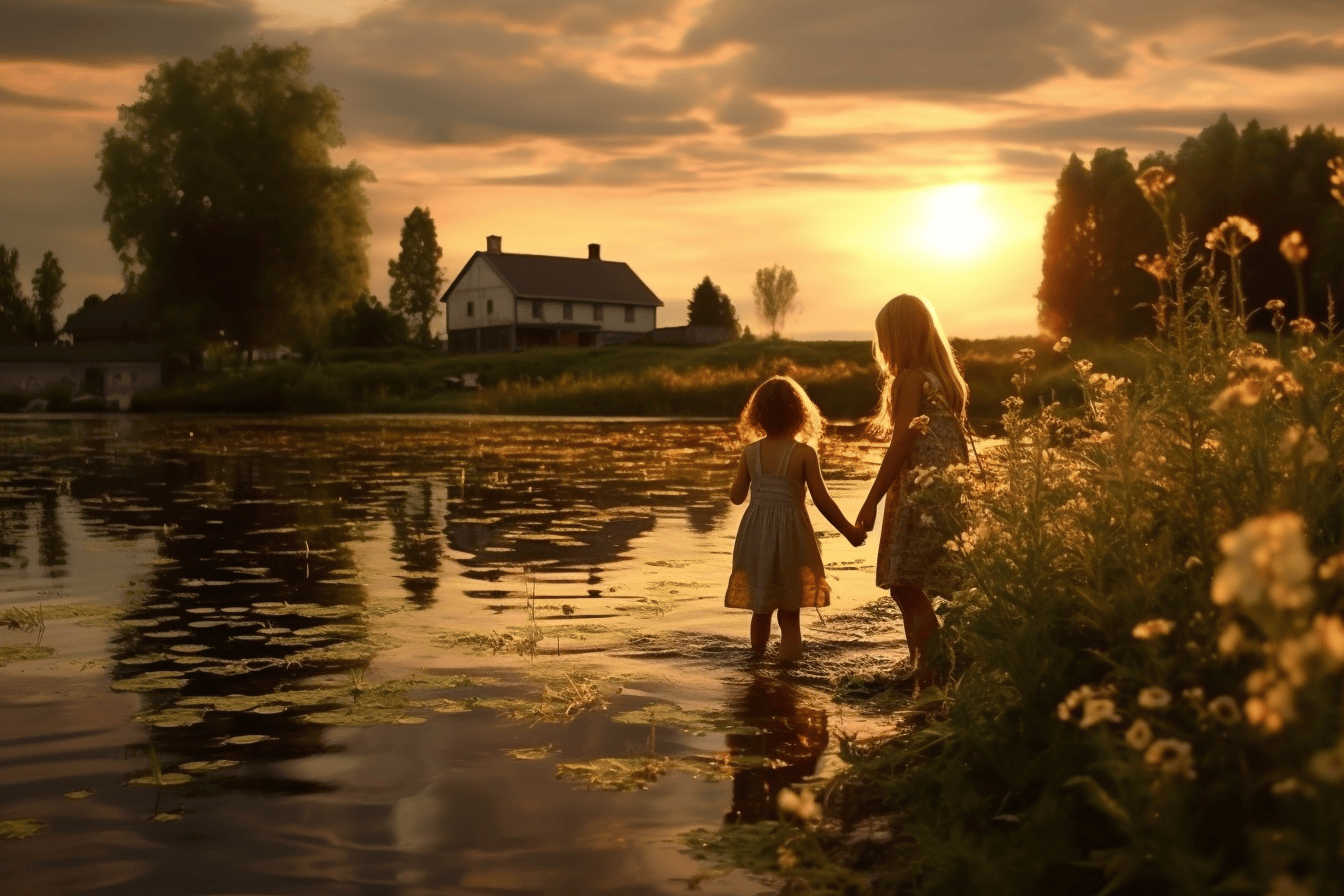Elfdalian: a language hidden in the valley
Have you ever heard of a language that’s so unique it’s known to only a handful of people? Enter Elfdalian, a linguistic treasure carefully preserved within the Swedish municipality of Älvdalen. In this blog post, we’ll embark on a captivating journey to discover what makes the Elfdalian language so special.
While Europe is home to several widely spoken languages such as English, Spanish, and German, the linguistic landscape of this region is far more diverse than it seems. Amidst these well-known languages, there are hidden gems like Elfdalian – a language with a rich history and unique characteristics that remain known only to a select few.
Elfdalian, also locally known as övdalsk, övdalską or dalska, is a Nordic language spoken in Älvdalen, a small community in Dalarna County, Sweden. It is considered an endangered language, spoken by around 2,000–3,000 people, among whom only adults use it as their first language. While Elfdalian is sometimes referred to as a language variant of Swedish, numerous studies have reached the opposite conclusion. Firstly, it exhibits significant differences from other Swedish language variants. Secondly, it is practically unintelligible to most Swedish speakers. Moreover, Elfdalian has undergone a robust standardisation process, resulting in the publication of several Elfdalian books and publications, along with the development of an Elfdalian orthography. Additionally, Elfdalian speakers don’t adapt their language when switching to Swedish or vice versa; instead, they employ code-switching to distinguish between the two linguistic systems.
A meeting point for archaisms and innovations
What truly makes Elfdalian fascinating is its isolated nature. Unlike Swedish, it has remained relatively untouched by outside influences, evolving independently for centuries and preserving its distinctive linguistic characteristics. While the language retains numerous archaic features (e.g., the case system), it has also incorporated several innovations (e.g., vowel harmony).
- Grammar
Elfdalian’s grammar is remarkably conservative, retaining numerous old grammatical features from its Old Norse ancestor. It features verb conjugation based on person and number, a four-case system for nouns similar to Modern Icelandic and German, and the preservation of the Old Norse three-gender system. The length of the root syllable plays a crucial role in its declensional and conjugational system. The language exhibits syntactic characteristics such as the potential omission of first- and second-person plural pronouns, variable verb raising between generations, and the occurrence of multiple subjects in specific clauses, but many of its syntactic elements remain largely unexplored.
- Vocabulary
Elfdalian’s vocabulary features a fascinating mix of shared linguistic roots and unique regional terms, such as belgr ‘backpack’ and brinde ‘moose’, not found in standard Swedish. The language continually evolves by introducing new words, sometimes through morphological borrowing, like raðio ‘radio’ and uordbuok ‘dictionary’. However, younger generations are integrating Swedish terms, often not conforming to Elfdalian’s grammatical rules and phonetics. Despite these changes, Elfdalian maintains its distinct identity and integration within its phonological and inflectional system, along with the preservation of its unique toponyms and farm names.

- Phonology
Elfdalian’s unique phonology sets it apart. It features nasal vowels, retains voiced fricatives from Old Norse, and uses alveolo-palatal affricate consonants in certain dialects. Unlike some Norwegian and Swedish dialects, it doesn’t change certain consonant clusters into retroflex consonants. Stress is usually placed on the first syllable of words. The language’s vowel system includes rare nasalized vowels with diverse origins like Proto-Germanic and Old Norse developments, adding to its distinctiveness.
From doctoral papers to Minecraft
Despite its rich heritage, Elfdalian faces several challenges that threaten its survival. The primary threat is the dominance of Swedish in Sweden, as it serves as the official language and is used in education and government. Elfdalian speakers often switch to Swedish in formal settings, contributing to language shift. The younger generation in Älvdalen tends to prefer Swedish due to its broader utility and economic opportunities, leaving Elfdalian primarily spoken by older generations, thus endangering its future. Additionally, there is political tension as the Swedish government does not officially recognise Elfdalian as a regional or minority language but considers it merely a variant of Swedish.
Efforts to preserve Elfdalian have gained momentum in recent years. Various cultural and linguistic organisations, along with local activists, are dedicated to documenting, revitalising, and popularising the language.
Researchers have conducted thorough studies of Elfdalian and its speakers to create comprehensive dictionaries, grammatical descriptions, and orthographic conventions. As of 2023, three conferences have focused on various aspects of the language. Language courses have been introduced in Älvdalen to teach Elfdalian to younger generations, instilling a sense of pride in their linguistic heritage. Elfdalian is also taught in other parts of Sweden and abroad, with many courses available online via platforms such as Skype and Facebook. Cultural revival efforts, including events to promote Elfdalian traditions and language, are organised to foster community pride and a sense of belonging.
In 2018, the local community launched the “Wilum og Bellum” project. Its primary goal is to safeguard, revitalise, and develop Elfdalian as a thriving language while raising awareness of it. The project aims to provide all children and youths in Älvdalen the opportunity to embrace their language and cultural heritage, ensure ongoing Elfdalian instruction in preschool and primary education, and have at least 30% of ninth-grade students in Älvdalen proficient in speaking Elfdalian by 2030.
By early 2021, the project had successfully integrated Elfdalian into high school curricula, organised traditional summer camps and youth retreats conducted in Elfdalian, held writing competitions, designated themed weeks in primary and middle schools for Elfdalian, created illustrated Elfdalian books contributed by young authors, introduced Elfdalian into Minecraft, and developed an app with games and activities in Elfdalian for preschool and school-aged children.

Activism – the key to language preservation
Preserving Elfdalian is not only about safeguarding a unique language, but also protecting a community’s cultural identity. Language symbolises heritage, and its loss equates to losing a part of one’s history. Despite challenges, community activism offers hope for its preservation. Efforts to revitalise the language, combined with the community’s determination, promise a brighter future.
In conclusion, Elfdalian is a linguistic treasure deserving recognition and protection. It represents a living connection to our past, a testament to language resilience, and a source of cultural identity for the people of Älvdalen. As we celebrate global linguistic diversity, let’s remember hidden gems like Elfdalian that enrich our understanding of human communication and heritage.
Further reading
Gunnar Nyström and Yair Sapir (2005): “Introduktion till älvdalska”
Kristine Bentzen, Henrik Rosenkvist and Janne Bondi Johannessen (2015): “Studies in Övdalian Morphology and Syntax”
Omniglot: Elfdalian language, alphabet and pronunciation
Yair Sapir (2006): “Elfdalian, the vernacular of Övdaln”
See also

How climate change destroys indigenous languages: three unique languages on the brink of extinction

Dialects of Castilian and Spanish

